#Shinto-Buddhist syncretism
Explore tagged Tumblr posts
Note
Hello.
It is very interesting seeing your posts on cultural Christianity, if not only because I think it is interesting from the weird religious mix I grew up with. Because I have Catholic family members, but IDK anything about Catholicism, but I still ended up internalizing ideals I didn't know were connected to it and only really apply them to myself (?)
Which is weird to me. I actually grew up as a Mahayana Buddhist, specifically Shin Pure Land Buddhism. So even despite that Catholic connection, I still like... have more the "thought process" of my school? Like, I'm used to people online practically only seeing Christianity and *maybe* Judaism or Islam as religions that exist, and it's weird to me just because how many Buddhist ideas were put in my head when I was younger (even despite the Catholicism, again!!). I knew someone who denied me being Buddhist, because Buddhism was only a concept used for movies (?) and that I was being racist for following it (?). Very fascinating stuff. I mean, I guess I don't really follow if anyways. I am secular, I just follow the teachings.
Sorry for this ramble. I guess it had no point. I was just, I guess, interested in sharing my thoughts as someone who kinda lived celebrating Buddhist stuff while having a semi-Christian environment and feeling isolated for it? Sorry again!!
Hey no need to apologize this is really cool! Also oooooh Pure Land Buddhism. Don't see that one every day. I have a weird fascination with Shin Pure Land specifically because a lot of the time--and this is generalizing, I know--most major Asian religions tend to be very contrary to Christian ideas of the material world (i.e. Shinto believes the material is inherently spiritual and holy vs Christianity believing it is inherently sinful and irredeemable until the Rapture), and Pure Land is this fascinating syncretic version almost! Like, the material world is extremely difficult to be GoodTM in, so the hope is to just try your best and hope you get into the land where Goodness is more feasible is just. Such a fascinating interpretation of Buddhism when you compare it to other more popular Buddhist vehicles.
#sorry i know i must be preaching to the choir here haha#but the weird mixture of Catholicism and Shin Pure Land Buddhism is arguably a feature not a bug!#there's a lot of commonality between those two specifically!
43 notes
·
View notes
Text
The Buddha in different religions/beliefs.
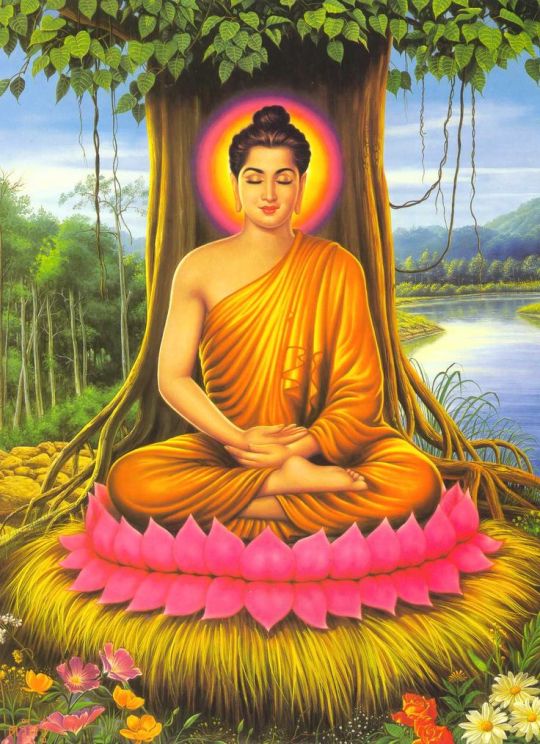
Firstly, who is the Buddha?:
The historical Buddha was a prince named Siddhartha Gautama who lived 2500 years ago in what is today northern India/Nepal. He was born into a warrior clan known as the Shakya, which is why he is often called Shakyamuni, “Sage of the Shakyas.” He is the one to later abandon worldly attachments, become enlightened, and found Buddhism.
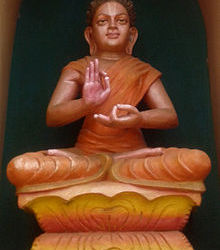
The Buddha in Hinduism.
Some Hindus consider the Buddha as the 9th avatar of Vishnu/Dashavatara, The Buddha was integrated into Vaishnavism, it was also believed the Buddha’s wife, Yasodhara, was the avatar of the wealth Goddess Lakshmi, though Buddhists deny this, so as other Hindus who identify the 9th avatar of Vishnu to another being who was also called “buddha”.
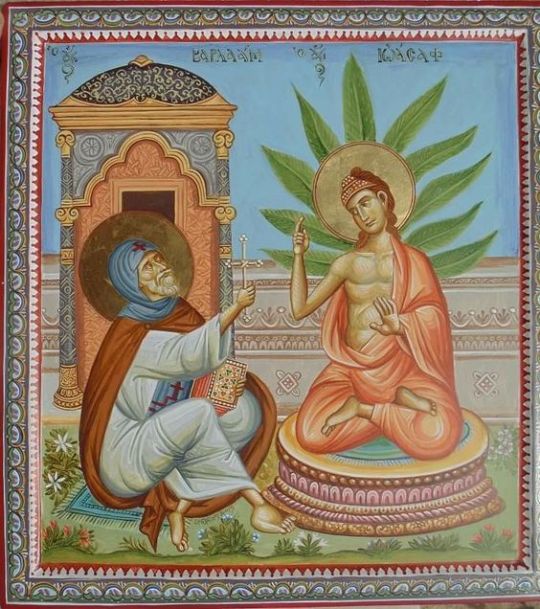
The Buddha in Christianity.
Called St. Josaphat (Budhasaf) of India, The story of St. Josaphat tells of a prince in India who is converted to Christianity by a monk, despite his father's attempts to prevent it. The monk and prince are later honored as saints in Christendom. The Buddha was honored as a Christian saint for about a thousand years, but this wasn't recognized until the mid 19th century.
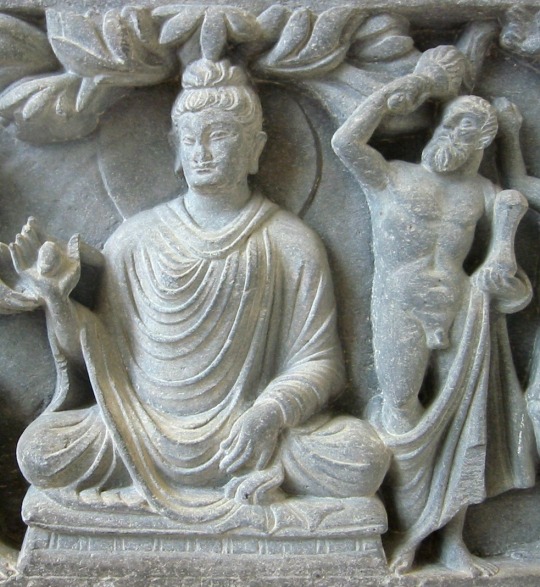
The Buddha in Hellenism.
Buddhism had a big influence on ancient Greeks, in which they would identify Buddhist beings with Greek beings, the Greeks were also the first ones to make Buddhist statues. Heracules (or Zeus) was identified with The bodhisattva Vajrapani, whom was seen as Buddha’s protector. There also was a Syncretism between The Buddhist Goddess Hariti & Greek goddess tykhe.

The Buddha in Taoism.
Some Taoist believe that the Buddha was a reincarnation of Laozi, the founder of Taoism. Some also believe he was either on the same power-level as the Jade emperor, the Taoist king of heaven, or stronger than him. 'Buddha' is absorbed wholly into the Taoist cosmology, becoming another term used to describe the generative tissue at the source of all things in both the mental and physical realms.
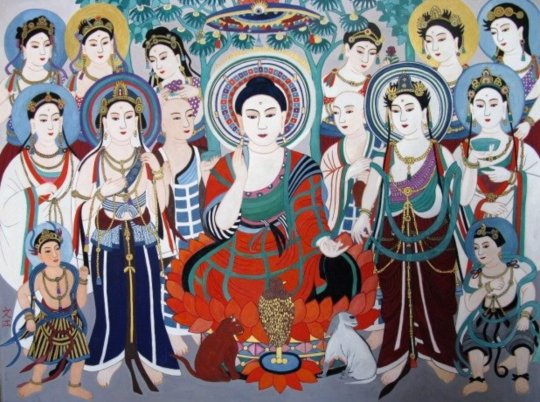
The Buddha in Shinto.
Buddhism & Shinto are mostly seen highly entwined in Japan. The buddha is called Shaka in Japanese & was transformed into a powerful Japanese deity, whom coexisted with the Shinto gods. Buddhist temples were often attached to Shinto shrines. A Shinto temple would sometimes have a priest of that shrine read a Buddhist sutra in which Shinto events took place.
#buddhism#buddha#buddhist art#hinduism#christianity#hellenism#Taoism#daoism#shinto#shintoism#religions#the buddha#Siddhartha#gautama#siddhartha gautama#shakyamuni buddha#shakyamuni#desiblr#lotus-list#buddhistwitch#desi#desi tag#mahayana#vajrayana#theravada#zen
23 notes
·
View notes
Text
destruction as a means for healing
there's very interesting parallels between watatsumi island and scaramouche.
there's so much i need to explain regarding lore and buddhism to understand how I'm almost giving up, but i really like the idea overall, so we persevere.
buddhism is divided into three branches. mahayana is the one that spread to japan and syncretized with shinto
inazuma's narratives take inspiration from japanese mahayana buddhism (obviously), especially for characters like ei and to a lesser degree kazuha
watatsumi was inspired on ryukyu kingdom (i wanna complain about this in detail but not today) who had their own religion, most closely related to shinto. they did receive foreign influence, but the pattern im tracing is only in terms of the themes, not implying buddhism is directly tied to its culture
the goal of buddhism is basically to meditate ur way out of the cycle of reincarnation. the world is illusory and ur trapped in it because u cling to ur suffering (im simplifying it), so ur supposed to follow the doctrines and practices in order to integrate them to ur life in a way that it becomes natural.
things like ei quelling her desires or being against visions or becoming disossiated from her sense of self are all nods to these buddhist principles. so is kazuha choosing to let go of his pain and burdens (material and emotional attachments) in order to live with inner peace.
on the other hand, we have watatsumi and scaramouche who do anything but. their lives are defined by the sins of their pasts and the resentment they carry with them.
watatsumi descend from enkanomiya, and i need to point out this pattern:
they were abandoned by a god (the primordial one)
then they were granted divine knowledge (from istaroth)
they used this knowledge to create technology (aberaku built the artificial sun, helios)
they turned this technology into a divine object of worship (the political class convinced their people helios was a real god and began the corrupt ruling of the sun children)
they suffered until another god helped them out of compassion (orobashi agreed to be their god and took them to the surface)
now read those again with scaramouche in mind.
it is curious then, that their paths would cross during the inazuma chapter via the distribution of delusions. (convenient sidenote, the concept of delusion is the source of evil in buddhism)
watatsumi feels a lot of resentment against narukami for killing their god. so much so, that they were willing to use delusions which drained their life force in order to defeat them, and even after the war is over there are some resistance soldiers who wont let go of their resentment.
the delusions here are a key element, since they were literally made with the remains of their god. and scaramouche was the one tasked with distributing the delusions. the allegory is so in ur face its kinda hysterical.
now heres where it gets fun: the remains of orobashi are the source of the problems scaramouche faced in the past. tatarasuna was built to smelt swords with jade steel, which is made from crystal marrow extracted from orobashi's skeleton. and the illness that takes the life of the little child later is caused by the tatarigami, the surviving resentment of orobashi.
(COME ON)
these two narratives are so so closely tied its impossible for it not to be intentional. and u might ask ok but whats the point then, and to that i can offer:
mahayana buddhism was made as an alternative to theravada buddhism, and then vajrayana buddhism was created from mahayana buddhism. the differences dont matter much for the context of this post, in simple words vajrayana focuses on tantric practices and rituals. in mahayana u cultivate ur path out of suffering with meditation, and in vajrayana u add tantras and rituals to that meditation.
its probably not as simple as this, but mahayana sort of centers the worship on compassionate bodhisattvas (deities who have delayed their enlightment to help humans), and even though they all have the same symbols, there might be a bit more emphasis on wrathful bodhisattvas in vajrayana buddhism. overall these deities are idealized symbols, ur not meant to be them, they are symbolizing a virtue (i assume??).
whats important is a branch of vajrayana did make it into japan, becoming shingon buddhism, which centered its worship around one key wrathful bodhisattva: acala, also known as fudou in japanese. this is basically a symbol of enlightment through destruction. he's a deity that destroys ur pain and suffering, ur obstacles for enlightment. obviously its symbolic, but the feeling and vibes it invokes are quite different from the compassionate symbols of mahayana.
there is one ritual for fudou where things are offered to fire, so its basically purification through burning, through destruction and renewal of the self.
aka:
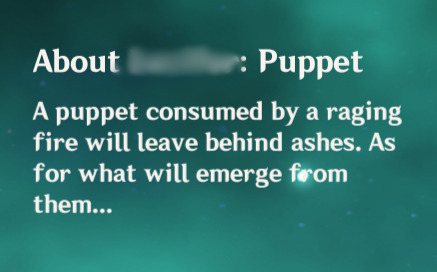
scara/wanderer's design is based off a shugendo monk, a super syncretic religion made of everything that reached japan. but, they have special worship for fudou and the fire ritual.
scara literally faces his suffering and sins (as in, the accumulation of karma in buddhist concepts) in the form of shouki no kami, and he fucking obliterates it just as he gains his vision. this is healing through destruction, at its least symbolic form, reaching enlightment not through meditation and not through "peaceful" methods of quelling emotions, but through goddamn rightful rage. (i am screaming this into the void it makes me nuts)
in a less literal (and exciting) way, kokomi also finds a way to redirect the resentment of the watatsumi soldiers into a path of self advancement. she doesnt punish them for their desire to take this resentment into action against the shogunate, instead she lets them form a special division where they will train not for revenge, but for the protection of their people. the rage is not quelled, the violence is not stopped, just redirected into actions for collective and personal well being. which is what ur supposed to do in buddhism, as far as i understood (the concept of chanda, and all that)
anyway, yeah, healing through violence. i love scaramouche
86 notes
·
View notes
Text
Reminiscing about when Krishna's portrayal in SMT4A got in trouble

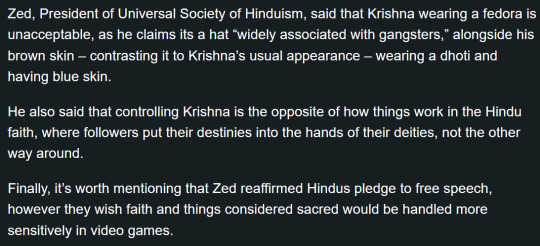
The brown skin comment as if actors portraying Krishna in a definitely-not-blue-way wasn't a recurring thing is definitely... funny to say the least.
Whether Rajan Zed's outrage (or even the necessity of reporting it) is justified or not, it provided a hilarious comment section for sure:




For those that are familiar with how demons are depicted in SMT, there's a nuanced view on the interpretation of religions in the games in which there are occasions where they shouldn't necessarily be seen as the 'raw' look of how they were in the scriptures.
As how Doi and Yamai explained in a Famitsu interview, context plays a key part for aspects they choose to deviate:


That being said, fans can't ignore that industry trends and the teams behind Atlus games being mostly Japanese definitely influence what role and what kind of design elements gets picked for myth figures in Megaten.
REGARDING KRISHNA'S ROLE:
In Megaten, let alone SMT4 itself, Japanese deities are in most instances portrayed sympathetically while deities from other cultures antagonize the protagonist, often in extreme ways. We could say it went even a little beyond for Krishna in a particular aspect.
SMT IVA's writer Yusuke Miyata envisioned Krishna as the one responsible for the persecution of Christians in Japan even though this was solely on Japan's part if you read real world history.

[Excerpt from SMTIVA's Setting Materials]
Fairly enough, Krishna in this context wasn't Krishna per se but Kokuten, a forced fusion between Mahakala (a buddhist version of Shiva) and Shinto deity Okuninushi due to religious syncretism. Also, remember how Flynn defeated Okuninushi in a sidequest in the original SMT IV? You could say this was the first step towards unsealing Krishna)
In any case, the weight of this action was pushed both towards Krishna since he was the one that kept Kokuten's memories alongside the Law side itself as referenced by Japanese-Catholic martyr Tokisada in the Four Wings, Four Heads sidequest from SMT IV.

Even if it's a fictional setting, the writers washing away the blood from Japanese hands is a reasonably controversial choice at best.
REGARDING KRISHNA'S DESIGN:
Doi provided a "contextualized" design for Krishna but didn't include a "rooted in its own myth" version as well, so the one we fight against and summon in the Cathedral of Shadows even across different games ends up being a Krishna with this extra layer of context. For comparison, it'd be the equivalent of players summoning Thor as Thormann from SMT1 or Azazel as Nishi from Soul Hackers.


Thus, we have one of most important figures in Hinduism appear as either a "British colonizer-friendly" design or fused with Flynn that has Japanese and Star Wars elements (that were also based on Japanese culture) that for obvious reasons wouldn't make sense anywhere but in SMT4. We don't have Krishna as his standalone self even though Lucifer, Lilith, Gabriel and Merkabah all have their own alongside their "disguise to hide in the crowd".
And as a very small sidenote, the discussion also provides an insight on the perspective that the franchise does have its habit of putting myths and gods of different levels of worshipping on a blender for the sake of being superficially used as tools for the player (which well... comes with monster-catching game genre territory where titles present themselves with the prospect of monster x human allyship but in practice they're just glorified cockfights).

[N is set as the primary antagonist of Pokémon Black & White for not wanting the creatures to be slaved to their trainers' will. By the end of the game, you will have him convinced that achstually Pokémon do like to follow orders and beat up other Pokémon. Anyone seeing parallels between Dagda and Danu's alignments here?]
Going back to our boy Rajan Zed, at the end of the day... he's just a loud spokesperson that will inherently criticize any "grey-area" depiction of Hinduism (and can't be compared to average followers that mostly won't care about some random depiction in a Japanese videogame).
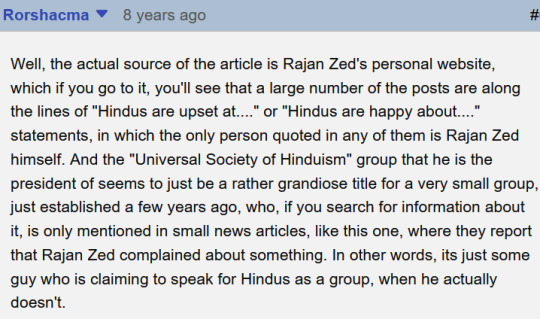
He clearly hadn't given up on expressing his dismayal as SMTV got released either.

To the point that Nobuyuki Shioda (writer for SMT strategy guides and the "Journey to the Mythical World" colums in the official SMT4A website) couldn't help but give a statement on the issue:

"Please don't misunderstand. The games are not made to denigrate Hindu deities. Focus has been given on respecting mythological depictions in recent years as well. But I know the games are not for everyone. We have to make an effort to gain understanding."
Then we finally have the most sensate comment from the crowd:
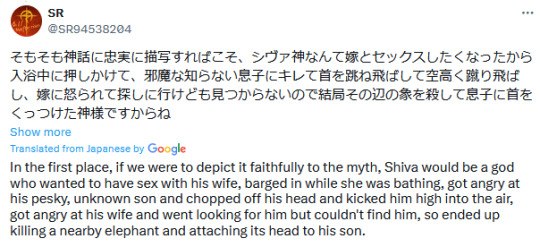
And to finish things:
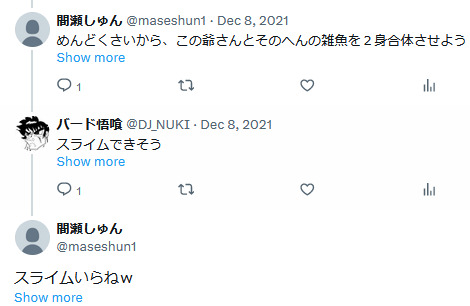
"This guy is a pain in the ass, so let's fuse him with some small fry" "Slime might be the possible result" "I don't want a slime lol"
12 notes
·
View notes
Text

Vermilion Torii of Shirahama Shrine: Gateway to the Sacred
Location: Shirahama, Shimoda, Shizuoka, Japan Timestamp: 07:43 on January 3, 2024
Fujifilm X100V with 5% diffusion filter ISO 3200 for 1/140 sec. at ƒ/8.0 Film simulation: Velvia/Vivid
A torii gate is a formalized gateway arch signifying entrance to a sacred area. Shrines may have one or more torii, such as here at Shirahama Shrine, where there are at least three. When multiple torii are present, the largest one is normally called the “Ichi-no-Torii” (first torii gate) and stands at the sando or approachway to the shrine grounds and courtyard.
Torii may also be found at various points within the precincts of the shrine to indicate increasing levels of sanctitude as one approaches the (本殿・honden), which is often located farthest from the entrance of the shrine grounds and behind the worship hall (拝殿・haiden).
Based on their present-day function, torii express the division between the profane and sacred realms. They are found not only at shrines but also at Buddhist temples, as seen in the famous stone torii of the temple Shitenno-ji in Osaka. However, when used as a map symbol, they generally signify the presence of a Shinto shrine as opposed to a Buddhist temple.
With the rise of Buddhist-Shinto syncretism in the 12th century, Shinto shrines began to appear within the grounds of Buddhist temples. Even then, torii were used to mark the entrances to such shrines. The origin of torii is unclear. In the writings of “The Inventory of the Properties of Otori Jinja in Izumi,” dated 922, there are references to torii that lead some scholars to propose that torii originated in Japan.
Regardless of the origin, torii in Japan share mostly similar basic designs with two upright posts topped by a horizontal cap beam (笠木・kasagi) that extends beyond the posts on either side. Beneath the kasagi, a horizontal tie beam (貫・nuki) is laced around the uprights and links them together.
Among the infinite variety of torii named for unique characteristics or the name of a specific shrine itself, basically all torii can be classified under two major categories: those with straight members, shinmei torii (神明鳥居), and those with curved members, myojin torii (明神鳥居).
The main torii of Shirahama Shrine, as seen in my photo, most closely resembles a myojin classification based on the following observations. See if you can identify these same specifications in the photo!
The top lintel (笠木・kasagi) has a strong upward curve.
The ends of both the top and secondary lintel (島木・shimaki) are cut with a downward slant.
The tie beam (貫・nuki) is straight, rectangular in section, and secured by wedges (楔・kusabi) inserted into each side of the pillars.
A strut covered with a framed inscribed panel (額束・gakuzuka) is attached at the center between the secondary lintel and the tie beam. (The inscription panel in my photo reads “白濱神社・Shirahama-Jinja or Shirahama Shrine in English.)
Finally, myojin torii can be made of stone, wood, or concrete or PVC (in the modern period) and are painted vermilion, although I have seen a few painted black.
For anyone interested in reading more about the different types of torii gates, I have provided links to reliable sources in my latest pix4japan blog post: https://www.pix4japan.com/blog/20240103-shirahama
16 notes
·
View notes
Text
More random mythological conspiracy rambling related to Germa. I can't stop having wild thoughts. This is related to the idea of "a single entity that is both good and evil in mythology".

Previously I had said that the Germa skull's eyes looks like the "two right curling tomoe" symbol. The tomoe is related to the magatama stones, where some people thought the magatama is meant to be a tomoe shape.



Aside from how its very shape kind of looks like a number "6", it also has connection to another "six", which is the Dairokuten Maou, a.k.a "Demon King of Sixth Heaven".
Dairokuten Maou is the demon king who is the enemy of Buddhism.
A variation of the legend of the Imperial Regalia of Japan says that the Yasakani no Magatama was given to Amaterasu the sun goddess by the demon king as a pact. Amaterasu promised the king that the Three Treasures of Buddhism (the Buddha, the Buddhist scriptures, and the Buddhist monks) will never come near her, and in return the king promised that he will protect the nation for as long as Amaterasu's descendants sit on the throne.
It's said that in order to keep that promise, in Amaterasu's main shrine, one cannot speak of anything related to Buddhism. Buddhist-related terms have to be said in code words and monks must not enter the shrine premises.
Probably it's not like this anymore now, but maybe this was at the time when the legend was being written down.
Because of this in Shinto or syncretic religions, the "demon king" is actually worshipped as some kind of "god" of wealth or prosperity. Aside from the pact with Amaterasu, the Dairokuten Maou is not some kind of scary destroying demon in the first place. He is evil because he tempts people with worldly goods (money, other riches, pleasure, etc), and so would cause people to fail their enlightenment in Buddhism.
For the kingdom that hired Germa, their help is a godsend. For the enemies, it's like the devil had come to destroy them. Both god and demon.
The point of this conspiracy is the sun goddess relation. In One Piece, Nika the sun god is something that's very important. So, what is hidden in Germa's ancient past? Before their destruction? Before World Government? Who knows.
19 notes
·
View notes
Text

aren't you a little young to be throwing around the term "shinto-buddhist syncretism"?
16 notes
·
View notes
Text
Torii
The Origins of Torii
There are two kinds of Sandō (road that approaches the shrine), a road that comes from a town or city and continues to the shrine, and the road from the entrance of the shrine to the Haiden (Prayer Hall) • Honden (Main Hall). Both are sacred roads in which visitors walk, and mikoshi are carried along the path. Therefore in order to demarcate the sacred land, torii, koma inu, stone lanterns, etc… are placed. Koma inu, and stone lions will be discussed later on, here is where torii are being discussed. In fact the origin of Torii is not clear. From extant examples and paintings in picture scrolls, it is known that a similar type of torii existed in the 12th century, but it is not known when and for what purpose they were built.
Why are there so many different types of Torii?
The present torii gate functions as a symbolic gateway, indicating that the area inside (beyond) the gateway is sacred ground. It also serves as a warning that any disrespectful behavior beyond the gate will result in punishment. Another feature of torii gates is that there are many types. It is said that the shape of the torii may have indicated the type of kami, but this is not certain. The form can be broadly classified into the Shinmei type and the Myojin type. While the Shinmei type is simple, the Myojin type is highly decorative and sometimes painted in vermilion. This may be related to the fact that Myojin-style torii are often erected at shrines of common people’s beliefs, as they have a strong sense of Shinto/Buddhist syncretism.

Parts of a Torii Gate
笠木 Kasagi
Cap Piece that covers the top of a Torii
島木 Shimagi
Long horizontal timber above the columns on a Torii, right below the Kasagi
台輪 Daiwa
The single piece placed where the columns meet the Shimagi, believed to prevent rot from setting in from the top of the pillars
額束 Gakutsuka
The plaque that holds the name of the shrine
楔 Kusabi
Wedges/Lynchpins
貫 Nuki
Lower horizontal timber, traditionally does not pierce the columns, and in Shinmei style torii, is said to be round
柱 Hashira
The two vertical columns leading up to the horizontal bars
藁座 Waraza
Reinforcement for the Daīshi at the bottom of the torii
台石 Daīshi
Stone pedestal at the bottom of torii
亀腹 Kamebara
White plaster bun-shaped mounds used to reinforce support base stones.
Varieties of Torii
神明系 Shinmei Style

Image Sources: 1 , 2 , 3 , 4
黒木鳥居 Kurogi Torii
Made from logs where the outer bark is still attached. Seen at shrines like 野宮神社 Nonomiya Jinja.
鹿島鳥居 Kashima Torii
The lower cross bar is quadrilateral (instead of rounded), and sticks out past the pillars holding the torii up. Seen at shrines like 鹿島神宮 Kashima Jingū.
神明鳥居 Shinmei Torii
The pillars, top crossbar and lower crossbar are all rounded. See at shrines like 神明宮 Shinmeigū.
伊勢鳥居 Ise Torii
The upper crossbar is pentagonal in shape. Seen at shrines like 伊勢神宮内宮・外宮 Ise Jingū Naikū • Gekū and 熱田神宮 Atsuta Jingū
明神系 Myojin Style
Usually these have the cap piece called a Kasagi while Shinmei do not

八幡鳥居 Hachiman Torii
The edge of the top bar is slanted. Seen at shrines like 岩清水八幡宮 Iwashimizu Hachimangū.

台輪(稲荷)鳥居 Daiwa (Inari) Torii
Below the upper crossbar are Daiwa (see above definition). Seen at shrines like 伏見稲荷大社 Fushimi Inari Taisha.

春日鳥居 Kasuga Torii
Less warping of the cap piece and upper crossbar (fairly flat). Seen at shrines like 春日大社 Kasuga Taisha.

両部鳥居 Ryōbu Torii
Has smaller support columns attached to the main pillars. Seen at shrines like 厳島神社 Itsukushima Jinja, and 氣比神宮 Kehi Jingū.
中山鳥居 Nakayama Torii
The same as a Myōjin Torii, except the lower crossbar doesn’t stick out. Seen at shrines like 中山神社 Nakayama Jinja.

Image Sources: 1 , 2
明神鳥居 Myōjin Torii
Both the upper and lower crossbars have warping (meaning they’re more curved). Seen at shrines like 神田明神 Kanda Myōjin.

山王鳥居 Sannō Torii
Above the Kasagi, there is an extra part called the Gasshō, which is a triangular shaped piece. Seen at shrines like 日吉大社 Hiyoshi Taisha.

三輪鳥居 Miwa Torii
To the sides are smaller support torii. Seen at shrines like 大神神社 Ōmiwa Jinja.
Translations of this page

4 notes
·
View notes
Text
yamagata (part one)
So last October, my father and I rented a car and drove around Yamagata, Japan. We were there mostly because I'm a terrible little nerd and I really wanted to see the Dewa Sanzan, but we also stayed the night in an onsen town in the middle of a volcanic caldera.
The trip didn't go entirely to plan... I meant to have three days so we could more thoroughly explore the sacred mountains, but it ended up storming terribly for a couple days, so hiking... Not ideal...
I have mobility issues (and Dad was recovering from an injury) so I have to be pretty careful while doing stairs in the first place, so... doing it during a storm... It just wasn't going to happen. Still, though! We got to see a lot of cool things and we had a nice time.
Explanations and photos under the cut!
To begin with, the Dewa Sanzan are a set of three extremely sacred mountains in Yamagata Prefecture. The three mountains are Hagurosan, Gassan, and Yudonosan. That's also the order in which they're meant to be hiked, and each mountain increases in sacrality.
Which religion are they sacred to? Well... that's kind of a complicated question. When Buddhism came to Japan in the 6th century, it entered into a sort of (sometimes awkward) alliance with Shinto, the indigenous religion of Japan. (...more or less...)
You hear the term shinbutsu shūgō a lot around the mountains of Yamagata. Basically speaking, this refers to the syncretic religion created by combining elements of Shinto and Buddhism. There's another concept, honji suijaku, which explains how this was accomplished. The idea is that Buddhist deities were manifesting themselves on earth as Japanese kami, or the indigenous spirits that made up Shinto. In other words, the idea was that when Japanese people were seeing kami, they were actually seeing Buddhist deities who were disguising themselves in order to better spread the precepts of Buddhism.
These syncretic kami-buddha(/bodhisattva) pairs were called gongen. This part's important for where I'm going next.
This syncretic religion wasn't really cohesive or regulated throughout Japan. There wasn't one set list of sacred texts or one set person in charge to make rules, y'know? It spread around Japan largely organically, so there was a lot of variation in belief systems, rituals, etc. Some people would identify more with the Shinto side of things, some more with the Buddhist side.
What I was interested in, and why I went all the way out there, was a mountain ascetic religion called shugendō. Shugendō was a religion primarily practiced in the remote mountains of Japan, and it centered largely around the worship of gongen as well as submersing oneself in nature to meditate. It wasn't exactly easy to learn about where I went to school in Kyoto, so I jumped at the chance to rent a car and go see some mountains that were very sacred to shugendō practitioners, or yamabushi.
(I had originally also had us going to see the Kumano shrines in Wakayama, but after Dad got hurt, I cut a lot of walking out of the trip. So we chose Yamagata because you could drive right up to a lot of the shrines.)
Now, during the Meiji period, Shinto and Buddhism were forcibly separated by the government. (I won't get into the whys right now.) When that happened, a lot of syncretic sites were forced to either choose to be one or the other or be physically destroyed by the government. On Dewa Sanzan, most of the shugendō sites decided to convert to Shinto. It makes it kind of odd, when you're walking around a Shinto shrine that still clearly, clearly has a lot of Buddhist influence...
One of my big interests, when it comes to religious studies, is syncretic religions, so I've been wanting to learn more about all this for ages. But, due to the purposeful destruction of religious orders/sites as well as the remote locations... well, it's been hard. I was PUMPED to get out there.
lmao now that I've given you all a mini history lecture...
Yamagata!
Now, the first day, Dad and I rented a car in Yamagata City and drove out to Hijiori Onsen. It was really out in the middle of nowhere and honestly? Big Spirited Away vibes. I'm over here explaining the concept of kamikakushi to Dad and he is like. Not loving it.
Add to that the fact that it was raining and dreary and kind of awful, and the whole situation was just spooky.
Hijiori Onsen is also known for something in particular -- a thing that I forgot to tell dad about. They're known for making kokeshi dolls, which I guess explained.... uh. what we encountered on the drive up.
Oh? What's that in the distance?
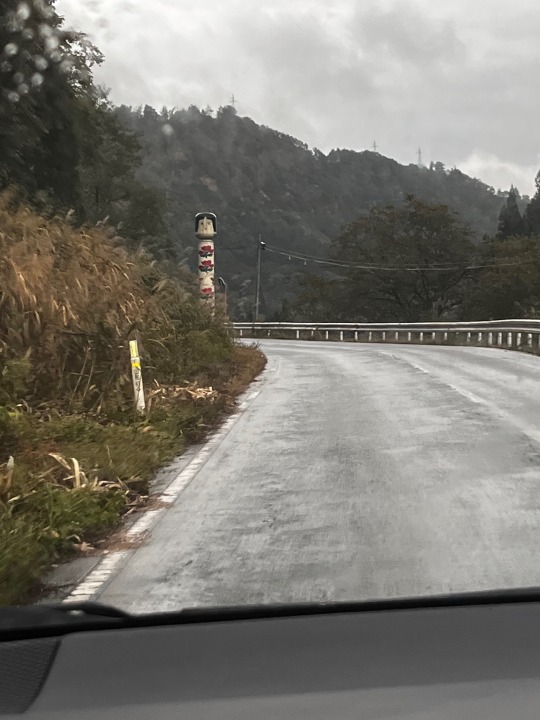
A giant, deeply creepy kokeshi?
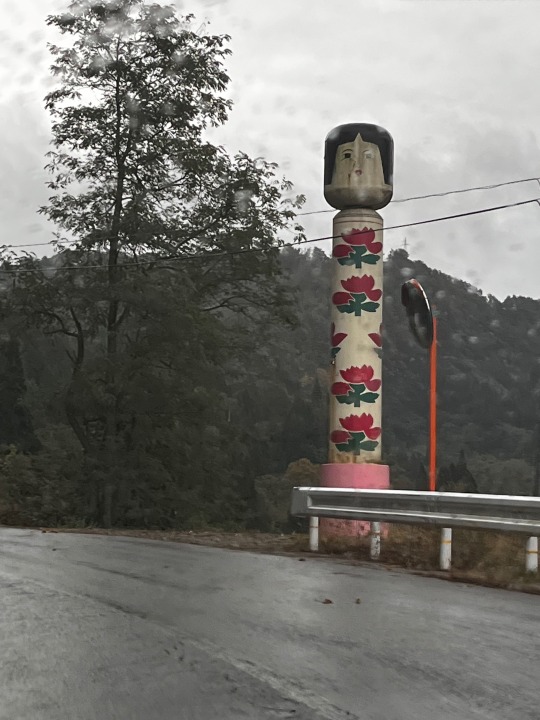
The terrible weather and empty countryside really did not make these things more reassuring.
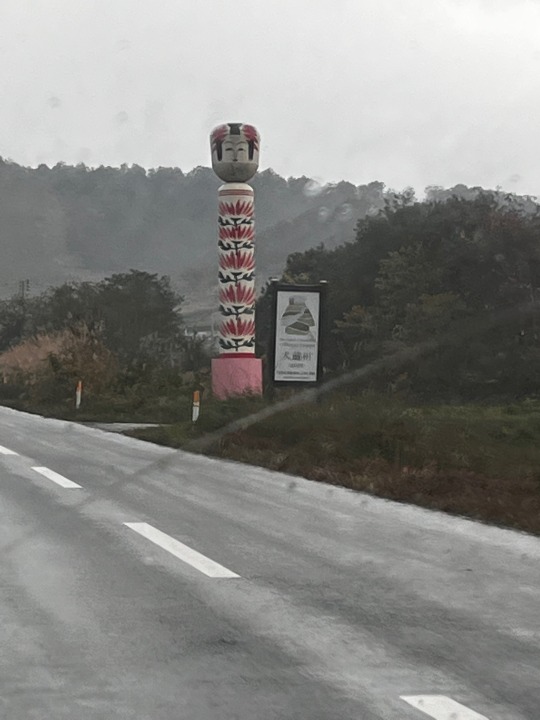
I will be honest with you, the whole area kind of had Fatal Frame vibes lmao.
BUT when we finally made it to Hijiori Onsen, it was really lovely.
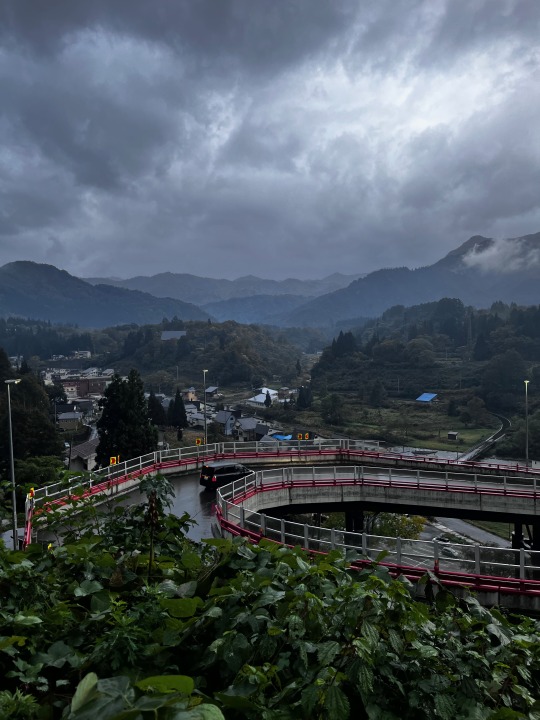
This was our ryokan, aka the only one that had an elevator and would allow my father's tattoos lmao.
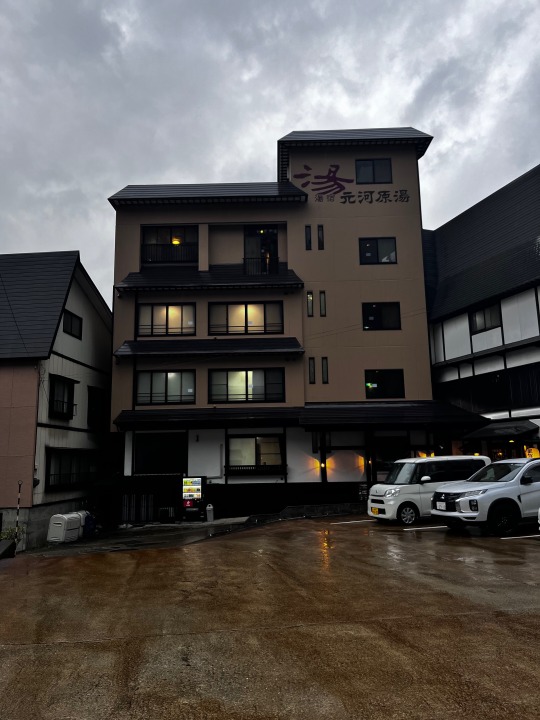
And oh look, more kokeshi. lmao
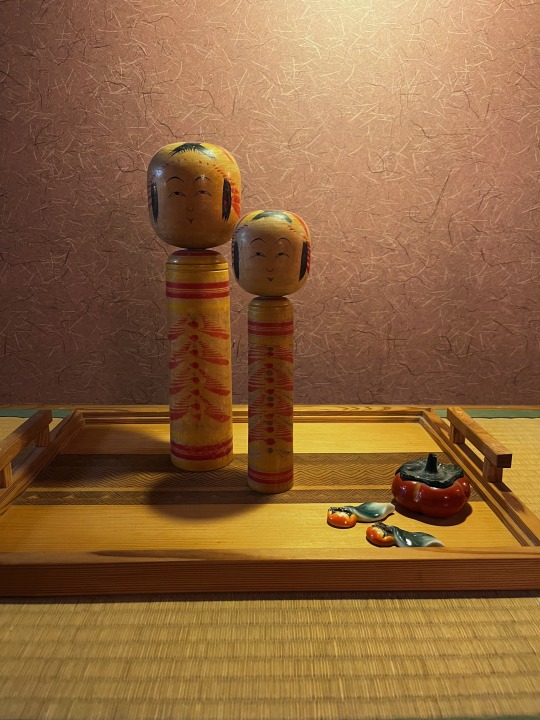
It was kind of fun to see the traditional fall decorations (the persimmons) next to more modern Halloween ones.
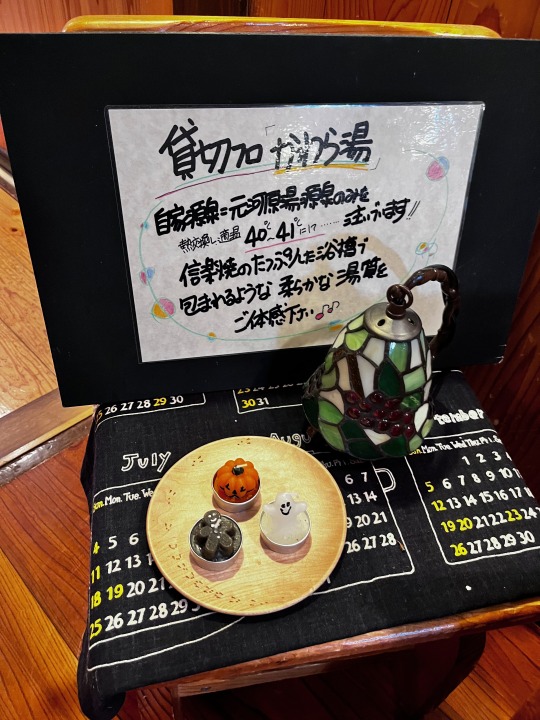
It was really lovely inside, though, and this was the view from our room.
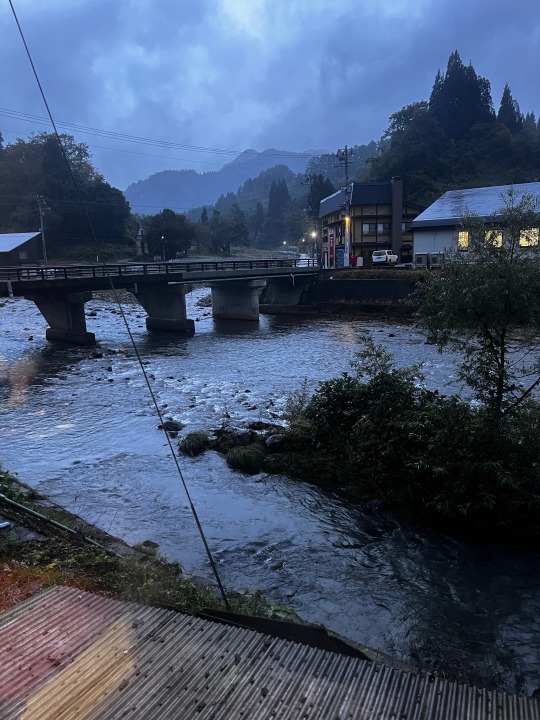
They also had a lot of local snacks, which was fun to try. (Pictured: apple cookies, green tea, and... I want to say candied burdock root?)
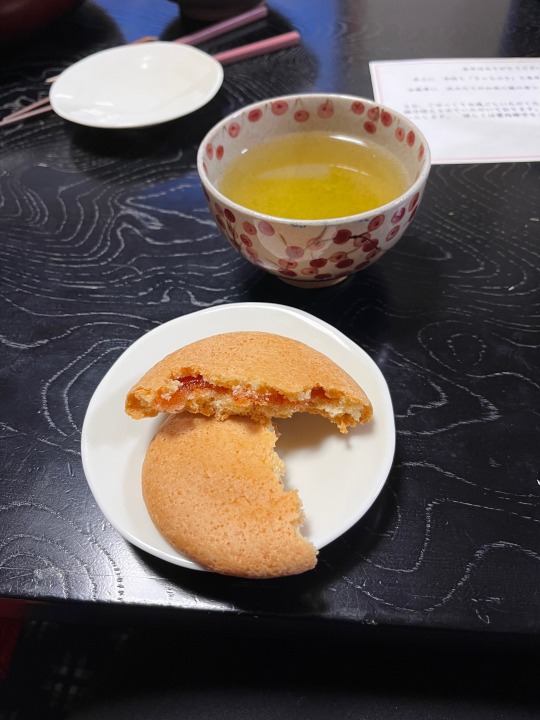
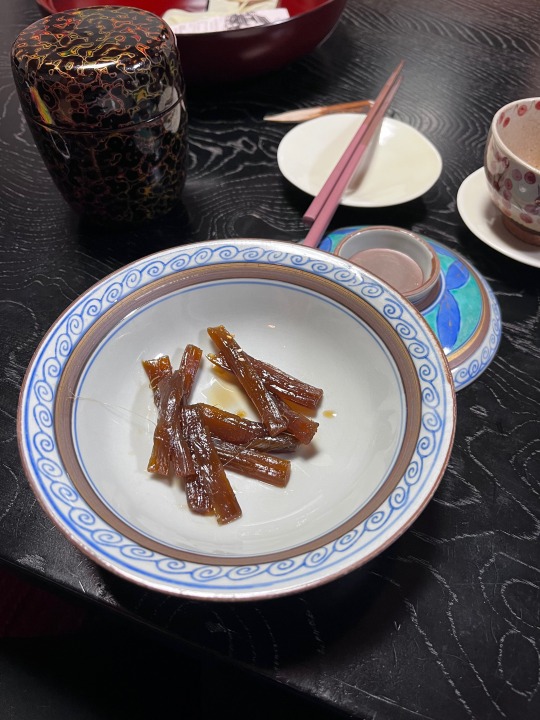
The food was a recurring theme, tbh. They fed us so much that my Dad was like no ;; please ;; we'll die ;;
More kokeshi, this time in the form of a chopsticks rest.
(Yes, I did buy myself one of their kokeshi at a shop in town before we left, lmao.)
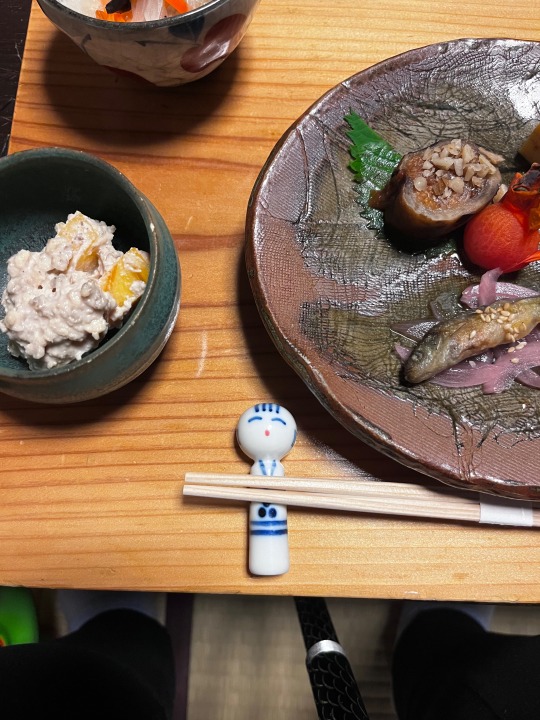
The dining room was pretty, with traditional braziers, soy sauce jars, etc.
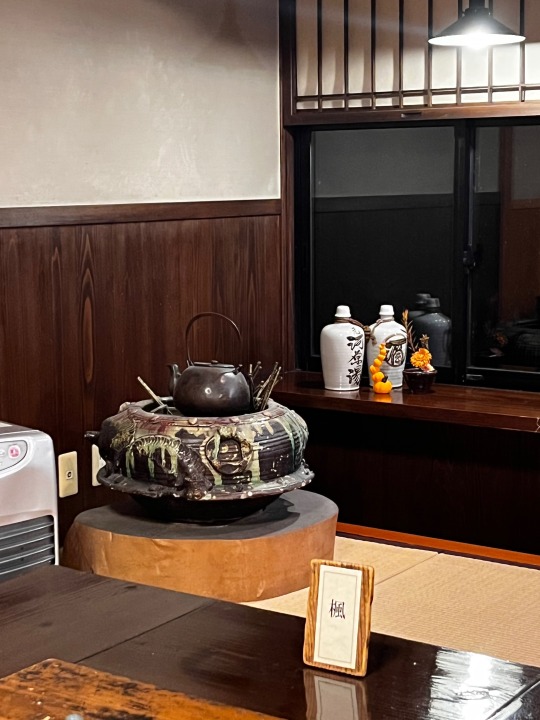
Seriously, though, dinner lasted for like two hours and they must have brought dozens of little dishes.
They cooked the local beef and vegetables inside giant leaves, which was fun and tasted really nice. Kiritanpo rice balls... Sesame-crusted fish...
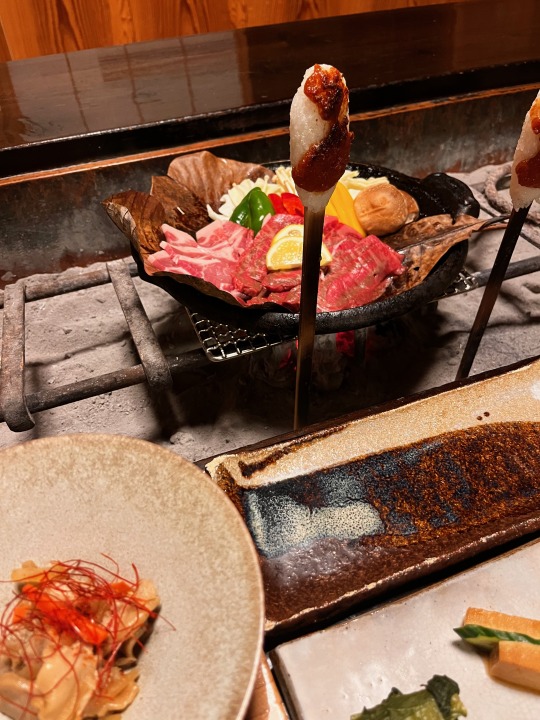
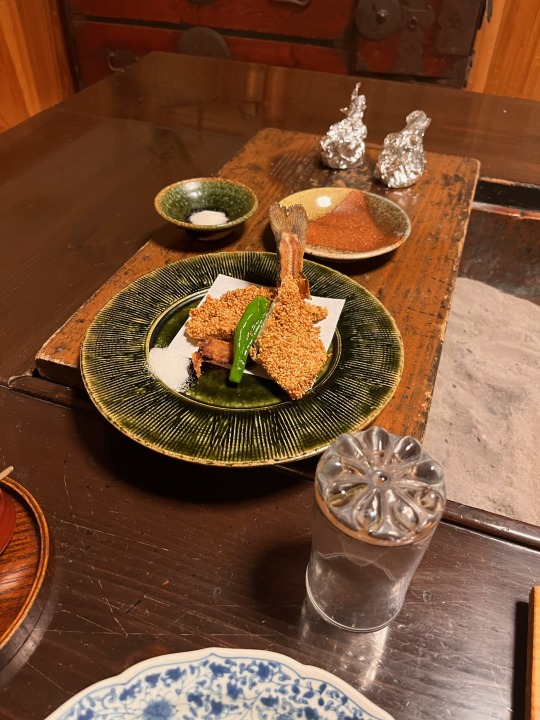
Even things I wasn't expecting to like as much, like the horse sashimi (🥲) and the fried fish bones were pretty good. (Honestly, horse is a little flavorless for me, but the fish bones were surprisingly good.)
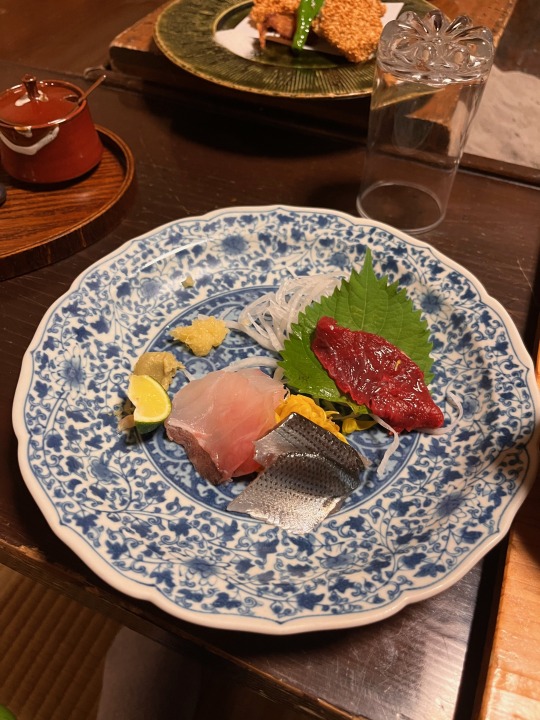
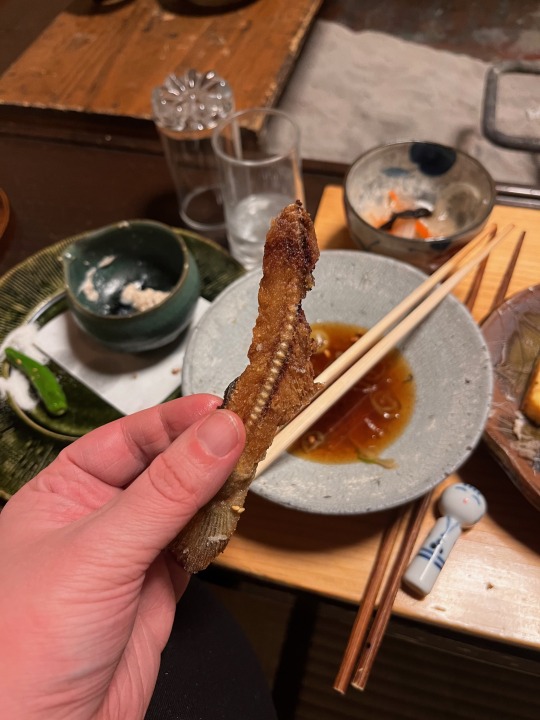
I won't show photos of everything (we'd be here all day) but one more highlight of dinner was the imoni, which is a sort of beef and taro hotpot they make in Yamagata in the fall. It was so good. ;; Tasted like sweet gyuudon with potatoes.
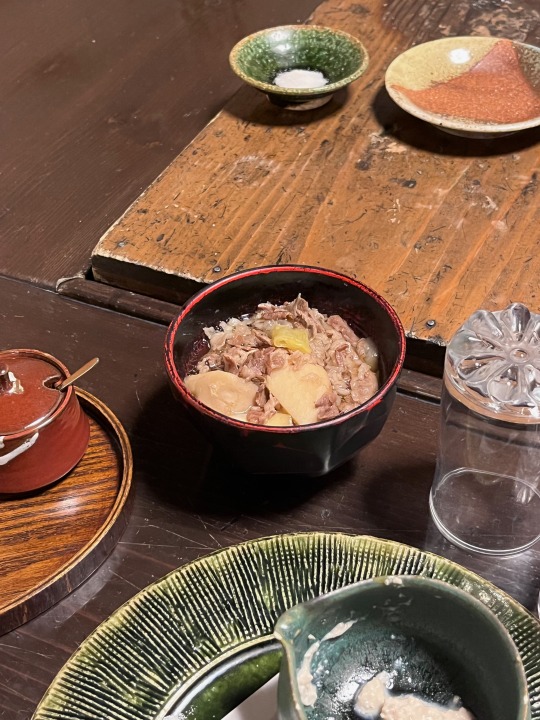
Also, I don't believe I got a photo of it, but when they were like "we have pumpkin :) :) for dessert :) :) happy halloween, americans!!!" I was like "omg, kabocha is my favorite, especially pudding!" and he was so excited, he was like YES, WE HAVE KABOCHA PUDDING! It was really cute.
(They seemed equally shocked and thrilled by my not-great Japanese. lmao. I think they'd had very low expectations of the weird Americans who'd come all the way out to Yamagata for reasons unknown to them.)
And after dinner, they brought a selection of local sake to my room to let me try, including some nigori sake, which is my favorite. It was so nice, even if we almost died from the sheer amount of food. They just kept BRINGING it lmao.
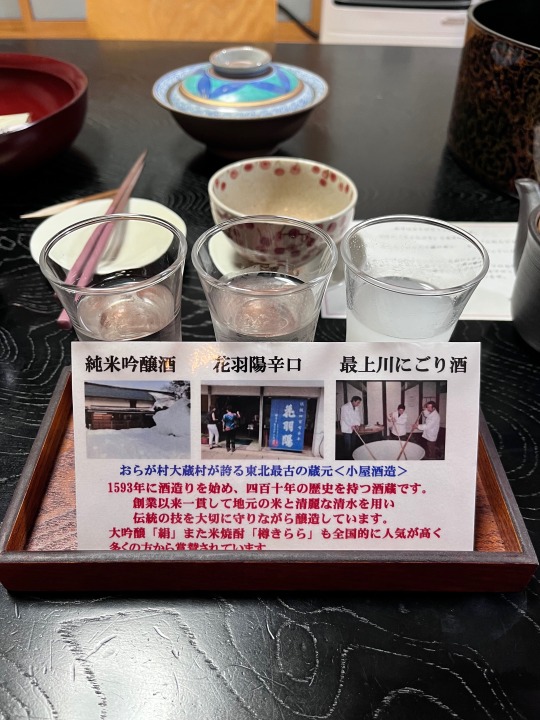
The baths there were also really nice, though obviously I couldn't take photos of those.
And this was the view from my window the next morning, once it was light out:
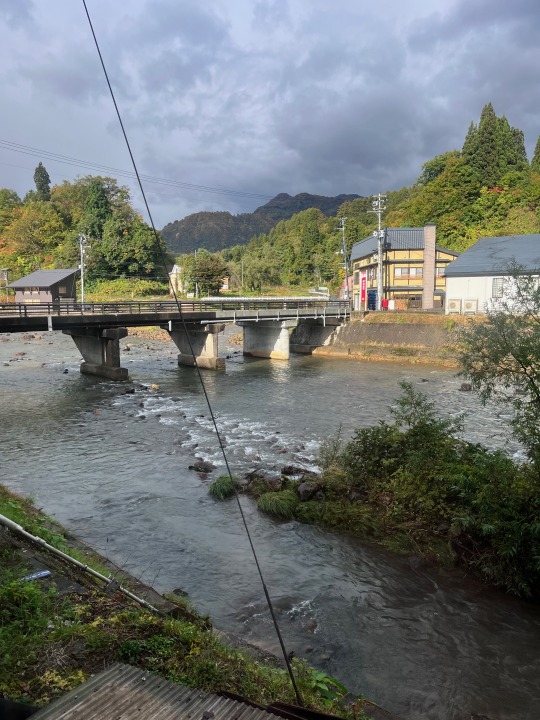
And breakfast, which was again far, far too much food. lmao
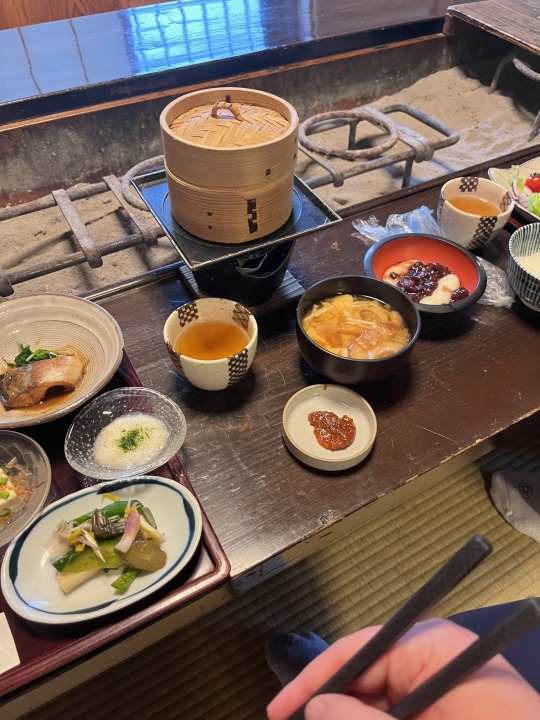
Then we drove around town a little. I forgot to take my phone with me when I got out of the car, like a dummy, so I didn't get great pictures of the tiny shopping district. I got myself a kokeshi, though, and got my father and I a box of karinto manju to split. (YES, I GOT THEM BECAUSE MY FROG GOT THEM FOR ME IN TABIKAERU, SO SUE ME. THEY WERE DELICIOUS.)
We then got extremely lost, but eventually stopped at the public baths. It was seriously pouring and it was cold and miserable so Dad just waited in the car while I took some short baths. Again, I can't show you photos of actual baths I took, but here are a few from online:


(Caldera Onsenkan)
This one was fun because it was naturally carbonated! They had hot and cold onsen you could bathe in. You couldn't really feel the carbonation in the hot onsen, but you sure could in the cold one. I put my feet in and was like "I am bathing in very, very cold soda" lmao.

(The cold bath for your hands and feet.)
And you could drink it, too! It was supposedly good for you! I only remembered weeks later that shugendō monks were able to self-mummify (more on that later) in Yamagata because their natural spring water was so high in arsenic!
So uh hopefully that one doesn't come back to haunt me. lmao

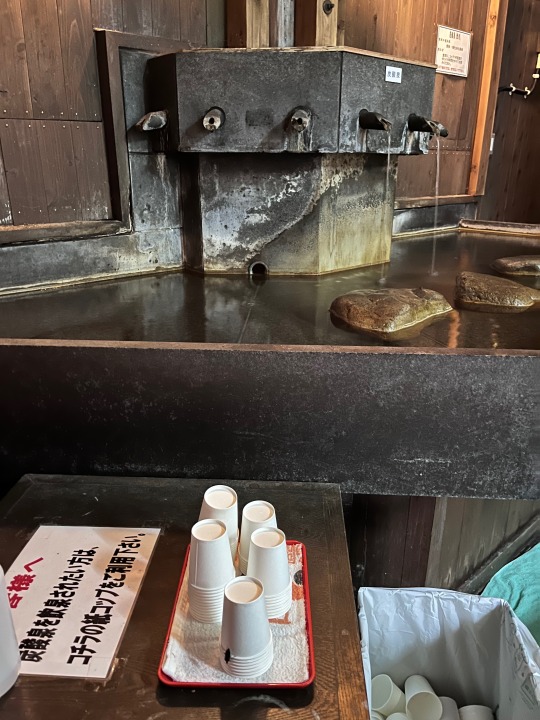
Watch out for the stinkbug.

There was another one in town that I was interested in, too... They say that Hijiori Onsen got its start as a medicinal hot spring town after a monk fell off a cliff and broke his elbow and then rolled into the hot spring and was instantly healed, and this was attributed to Jizo-sama.
So there's an onsen where Jizo will watch over you as you bathe.
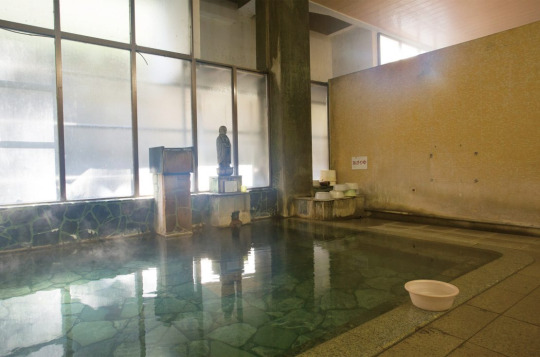
Which is fun, though I liked the similar experience in Kusatsu Onsen a little more. Gotta love a sacred bath, tho.
So then we left to go to the Dewa Sanzan. In the end, we ended up taking our time and stopping a lot at various shrines and stuff because I realized the weather was just too shitty to get a start on the mountains that day. Dad wouldn't even get out of the car except for lunch lmao. By the end of the day, it was hailing, so I can't really blame him.
The next leg of our trip will be in another post because I'm almost out of images in this one, but here's a couple more photos of Hijiori Onsen.
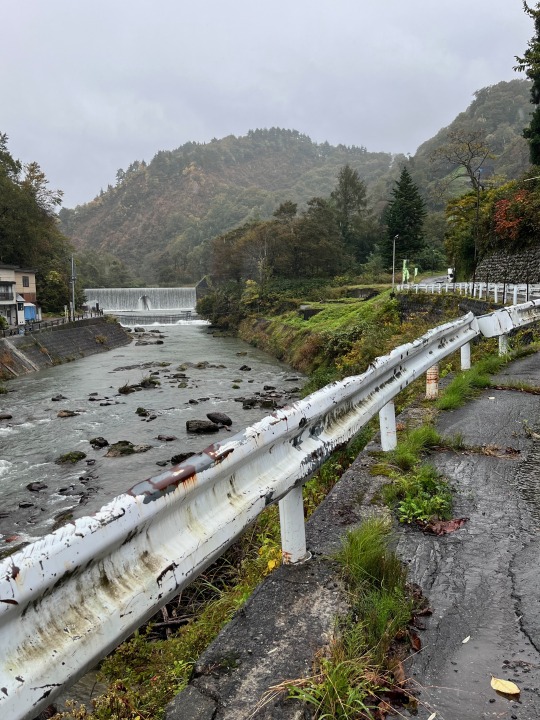
And two more for this round, we did get lost trying to get out of the caldera (...lmao) and broooo when I tell you my dumb ass was like "dad we are for SURE gonna get kamikakushi'd out here"
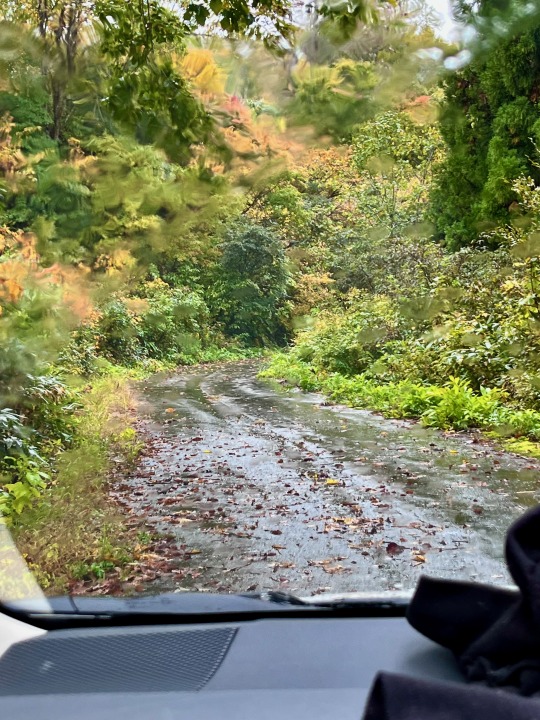
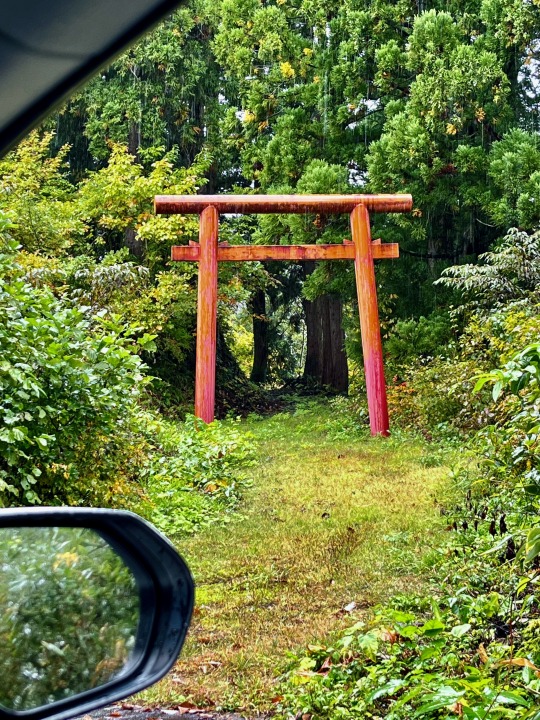
Tell me this doesn't feel like the beginning of a Miyazaki movie lmao.
(we lived, bitch!!! must've been all those sacred baths.)
12 notes
·
View notes
Text
A FAITH THAT PROPOSES PEACE BETWEEN RELIGIONS SO THAT THE WORLD MAY BE BLESSED WITH PEACE

“If religions do not make peace, the world will not make peace”! This phrase was said by the Christian Orthodox Archbishop of Albania Anastasios Yiannoulatos, who passed away a few days ago. Archbishop Anastasios was an internationally renowned Religious Scholar who had studied other religions without prejudice. In fact, he had come into contact with ancient indigenous beliefs in Africa. Therefore, his wish and exhortation have great value.
If we consider, from very ancient times, both in Europe and in the Middle East, how much blood has been shed of innocent people, because they had a different religious faith from their perpetrators, reaching our time, then the genocide of Muslims in Srebrenica, Bosnia, by Serbian Orthodox Christians weighs on the consciences of all people of good will.
In the Middle East, Palestinian organizations, projecting an aggressive Islam, attack Jewish citizens of Israel, demonstrating their desire to “throw” the Jews into the sea. At the same time, however, fanatical Jews, who interpret their Bible (Tanakh) with shortsighted eyes and a heart steeped in hatred, occupy Palestinian lands in the West Bank, attack innocent civilians because they are Muslims, destroy olive trees and invoke the name of their “god”!
In Japan, in 1859, within the confines of traditional Shinto worship, a farmer, Kawate Bunjirō, appeared, who discovered the living Kami (in the Shinto tradition, Kami are spirits or “sacred powers”, to whom honor and worship are offered). Kawate Bunjirō called the Kami that was revealed to him Tenchi Kane no Kami and he himself was called Konko Daijin from then on. (The name Tenchi Kane no Kami means, “the Golden Kami of Heaven and Earth”. In fact, in Japanese, the phrase “of Heaven and Earth” also refers to the concept of the Universe.)
What was revealed to Konko Daijin he did not keep to himself, but without any intention of proselytizing, he began to share it with the people of his village. Thus was born a “sect” within the Shinto religion, called Konkokyo (Teachings of the Golden Light) or Konko Faith.
In the spiritual life of Japan, there is a strong element of syncretism. Shinto shrines alternate with Buddhist temples, without competition between them. The Konko Faith has fully adopted this blessed coexistence of spiritual traditions and the interaction between them, which religious scholars call syncretism. On the occasion of the words of the Christian theologian Archbishop of Albania Anastasios Yiannoulatos, about peace in the world, I came to refer to the Konkokyo religion. Because the Konko Faith, in a miraculous way, in practice, implements the peace of religions!
According to the legacy of Konko Daijin, the Prophet, let us call him that, who revealed the message of Tenchi Kane no Kami to people, God is the common Parent of all people without the slightest distinction, regardless of race and religious identity. The Konko Faith denies the practice of “aggressive” missionary work, as we know it from various Christian churches or Islam. It does not seek to add “believers” to the communities, which for practical reasons, it calls “churches”. At the same time, anyone who wants to can become a member of the Konko Faith, without having to participate in any ceremony or entry process, simply becoming a member of a local Konkokyo church.
Believers are not obliged to offer financial support.
Members of a Konkokyo community participate in worship gatherings, which have many elements in common with Shinto worship, but they can maintain their reverence for any deity they wish!
Precisely because Kami-sama, as Tenchi Kane no Kami is also called, is the common Parent of all people, of all faiths, Konkokyo is open to any kind of cooperation with any religious community! From the official statement of the Konko Faith: “Konkokyo seeks to help solve people’s problems and address human suffering and to pave the way for peace and happiness. These problems can range from physical illness to war and environmental destruction. It is willing to cooperate with other religions and organizations to achieve these goals. Konkokyo has no desire to exert political or economic influence.”
In Konkōkyō theology, the relationship between Kami (God) and humanity is one of interdependence. Tenchi Kane no Kami has no gender, neither male nor female.
In terms that are understandable to people who are not Japanese, the Kami of the Konko Faith is the “Divine Parent of the Universe.” In the Konkōkyō worldview, everything is seen as being in deep interaction between them.
Kami-Sama does not reside in a distant or remote paradise, but is present in this world. The Universe is the body of Tenchi Kane no Kami.
An extremely interesting theology of Konkōkyo is the teaching that between Tenchi Kane No Kami and humans, there is a deep mutual interdependence (in Japanese it is called aiyo kakeyo). Humans cannot exist without Tenchi Kane No Kami, and Tenchi Kane No Kami cannot exist without humans! With air, water, food, and a host of other blessings of the Universe in the body of Tenchi Kane No Kami, humans can live and work.
Konkōkyō beliefs focus on improving human life in this world, showing appreciation for all things, living in a way that is ethical, with empathy, and acts of solidarity and prayer for others.
Any man or woman who embodies the above virtues in his life can become an ikigami, or felt Kami, a human being who helps others unconditionally and has inner peace. The ikigami in the Konko Faith, brings to mind the boddhisatva of Mahayana Buddhism. An ikigami is not a “supernatural” being, with mysterious, spiritual powers. He or she is the ideal human being, with flesh and blood, who shares everyday life without having abandoned the world in a monastery or a cave, but desires and tries to save his or her fellow human beings from suffering and problems and to make the world a happier place to live. It is believed that after death, the spirits or souls of those who have passed on to the afterlife remain in the universe, as mitama-no-kami (divine ancestral spirits), in a close communion with Tenchi Kane No Kami.
Bunjirō, the founder of the Konko Faith, has taught that anyone can receive the help of Tenchi Kane no Kami by “having faith in the Kami with a sincere mind” (in Japanese, the phrase is Jitsui Teinei Shinjin).
The photo is of Olivia Bernkastel, a Canadian living in Japan and is a priestess of the Konko Faith.
1 note
·
View note
Note
Would you be able to share a little bit on the Buddhist aspects of your practice, or more broadly on Buddhist-Shinto integration amongst japanese laypeople if that makes sense?
also thank you so much for this blog, your resources are amazing and I feel like it's pretty rare to be able to find content online in english from a pov that actively embraces syncretic/pluralistic nonsectarian religiosity as something worth preserving and celebrating!
I definitely can't answer for everyone, but as for me, one of the main kamisama I worship (Benzaiten-sama) came to Japan through Buddhism (she is originally Hindu). An ofuda from a temple enshrining Itsukishima hime no Mikoto, a Shinto kamisama she is heavily syncretized with, is on my kamidana. I have prayer books dedicated specifically to Benzaiten-sama (more in the Shingon style) as well as jewelry with her Sanskrit seed letter that I wear as an omamori -- though it is not formally blessed in any way, it at least reminds me of her and I find the stone material used to be calming.
I mostly do Buddhist stuff in the ancestor veneration part, though it's more of a folk practice thing since I'm relying more on what my grandparents do/did as opposed to what Jodo Shinshu mandates. To give more specific examples, I have photos of some of them, and burn incense and celebrate Obon usually (which is one of those Japanese Buddhist things that is uniquely Japanese and not a part of Buddhism in other cultures). I also have an orin, which is like a small singing bowl except I was taught to hit it on the side. I know that a lot of singing bowls sold in the US are touristy but Japanese Buddhist altars usually have them and they're used differently than the way I've seen others used.
Sorry this got kinda long!
12 notes
·
View notes
Photo

春日東西両塔跡 春日塔跡は春日大社の一の鳥居を入った参道の左側 (現在の奈良国立博物館構内) に、東西に並ぶ2基の塔跡である。神仏習合思想にもとづいて神社にも仏教の塔を建立した代表的遺構であり、両塔のありし日の偉容は多くの春日宮曼荼羅に描かれている。 西塔(現在地より西へ約90m)永久4年(1116)に関白藤原忠実により造営され、東塔(現在地)は鳥羽上皇の本願により保延6年(1140)に建立された。そのため西塔は"殿下の御塔"、東塔は"院の御塔"と称されていた。ところが治承4年(1180)に平重衡の南部焼打にあって焼失し、相次いで再建されたものの、応永18年(1411)の雷火にあって再び焼失した。その後は再建されることなく今日におよんでいる。 両塔は、1965年(昭和40)の発掘調査によって規模や構造が明確になった。その規模は興福寺五重塔とほぼ同じであり、高さ約50m、初層の一辺長約8.6mで、東塔の初層には裳階がつけられていた。また塔の南正面には複廊を築いて数門を設け、東、西、北の三方には一辺約100mの築地をめぐらしていた。 奈良国立博物館
東塔跡 (東より 1965年発掘時) 西塔跡 (西より 1965年発掘時)
現在地 東塔 西塔
春日宮曼荼羅 部分 (奈良市南市町自治会蔵 鎌倉時代 重要文化財)
Vocab 春日 (かすが)Kasuga 東西 (とうざい)east and west 塔跡 (とうあと)ruins of a tower 春日大社 (かすがたいしゃ)Kasuga-taisha 参道 (さんどう)road approaching a shrine 構内 (こうない)premises, grounds 神仏習合 (しんぶつしゅうごう)Shinto-Buddhist syncretism 建立 (こんりゅう)(act of) building (temple, monument, etc.) 遺構 (いこう)(archaeological) remains ありし日 (ありしひ)the olden days, days of yore 偉容 (いよう)dignified/majestic/imposing appearance 宮曼荼羅 (みやまんだら)shrine mandala 永久 (えいきゅう)Eikyuu era (7.13.1113-4.3.1118) 関白 (かんぱく)chief advisor to the Emperor 藤原忠通 (ふじわらの・ただざね)Fujiwara no Tadazane 造営 (ぞうえい)building (a temple, palace, etc.) 鳥羽天皇 (とば)Emperor Toba (じょうこう)retired emperor 本願 (ほんがん)Amida Buddha’s original vow/Primal Vow 保延 (ほうえん)Hoen era (4.27.1135-7.10.1141) 殿下の御塔 (てんかのみとう)Tenka no mitou 称す (しょうす)to take the name of 治承 (じしょう)Jisho era (8.4.1177-7.14.1181) 平重衡 (たいらの・しげひら)Taira no Shigehira 南部 (なんぶ)southern part; the south (of a region) 焼打 (やきうち)setting on fire 焼失 (しょうしつ)destruction by fire 相次いで (あいついで)one after the other, successively ものの although, despite the fact 応永 (おうえい)Oei era (7.5.1394-4.27.1428) 雷火 (らいか)fire caused by lightning 及ぶ (およぶ)to befall, to happen to, to go on (for, until) 発掘調査 (はっくつちょうさ)excavation, dig 規模 (きぼ)scale, scope, plan, structure 興福寺 (こうふくじ)Kofuku-ji 一辺 (いっぺん)side of a geometic shape 裳階 (もこし)pent roof (below the true roof of a pagoda, etc.) 複 (ふく)multiple 廊 (ろう)corridor, passage, hall 築く (きずく)to build, construct 設ける (もうける)to set up, establish 築地 (ついじ)mud wall with a roof 巡らす (めぐらす)to enclose (with), surround (with) 自治会 (じちかい)neighborhood council 蔵 (ぞう)possession, ownership
14 notes
·
View notes
Note
Since Amaterasu is connected to Vairocana are Susanoo and Tsukuyomi connected to any Buddhas too?
Well, yes, Shinto-Buddhist syncretism has been a thing for 1400 years and I think has been the only allowed religion in the Edo period. It's hard to find a major god that hasn't been stated to have a Buddha form.
Shinto-Buddhist syncretism gives Susanoo a deva form by the name Gozu Tennou and a Buddha form in Bhaisajyaguru. You're probably here because of FGO, so the name Gozu Tennou might bring you associations with Indra, but I must clarify that Gozu being an avatar of Indra is TM-original. In real life, their only connection is that the oldest known text to mention Gozu Tennou (Kin'u Gyokuto, author: Abe no Seimei) describes Gozu as a subordinate of Taishakuten (the regional name for Indra).
Note: this part about Susanoo is only applicable if you're not a local from the Kumano mountains. In Kumano, there's witness testimony from the 760s that Prince Ketsumi, an avatar of Susanoo, temporarily took his Buddha form as Amitabha.
Tsukuyomi's main Buddhist association is with Amitabha. The thing here is that at least 8 gods get called manifested forms of Amitabha (see the Susanoo example above) and Tsukuyomi is among the least popular of them, so while it's perfectly possible, and even normal, to interpret all these gods as derivative from the same Buddha, if you ask anyone what's the kami form of Amitabha, they're going to answer Hachiman instead of Tsukuyomi.
3 notes
·
View notes
Note
A long time ago, a book about Shinto I read mentioned something about "warrior priests". I sorta gave up researching them after the shrine they were associated with in the book pulled up no results on English google (forgot it's name, but apparently there's an American branch of it that has way more documentation than the Japanese branch I was trying to look into, but this ain't about that shrine).
The concept of a warrior priest intrigues me, as a fan of media where Shinto priests fight, so could you tell me what you know of them?
I'll be completely honest, I've never heard of Shinto priests that also acted as warriors before this. So I was a bit lost as to what to do here.
However, I do know of the much, much more famous Buddhist warrior monks, called sōhei (僧兵 lit. "monk soldiers"), which I originally planned to use as my answer.
Fortunately, it is in the middle of researching them that I believe I came across a good answer to your question, but first, let's go over some history (which I've tried my best to keep brief and relevant to our topic today).
History of Shinto and Buddhism
Shinto and Buddhism have been closely intertwined for most of Japan's history. In fact, for a good part of it, most people would've understood them as a single system of faith, one and the same.
From our modern point of view, we call this shinbutsu-shūgō (神仏習合), the "syncretism of kami and buddhas" (syncretism being the combation different beliefs; Kami being what I usually refer to as the Shinto "gods").
It was not until the Meiji Restoration in 1868, when the "Kami and Buddhas Separation Order" (神仏判然令) was decreed, that the two religions for forcefully split in twain.
Yet even still, the two were never truly and completely separated, many Buddhist temples still house small Shinto shrines, and some Shinto shrines are dedicated to Buddhist deities like any other kami.
Indeed the policy never succeeded in its goals to separate the two religions, many Japanese people still practice both and visit both shrines and temples, but what it did do was create the modern view that they are separate, independent religions.
Practices/Beliefs Under the Syncretism
Right, now we can take a look at the practices under the syncretism that lead to these "warrior priests/monks" that I mentioned prior.
To keep things brief, basically, the Shinto gods and the various Buddhist deities (Buddhas, bodhisattvas, etc.) were fused together. The "how" was never agreed upon, but the mainstream idea was the honji-suijaku theory (本地垂迹).
It suggested that Shinto gods were but local manifestations of the buddhas and bodhisattvas, and that they too were not exempt from the cycle of death and rebirth, samsara.
Thus, Shinto gods needed to achieve enlightenment, nirvana, as well, just like us humans. Buddhist temples were built close to Shinto shrines so that the gods can listen to Buddhist sutras, cultivate good karma, all that good stuff.
There's a lot more too, like how Shinto gods later come to be considered the protectors of Buddhism, but the important takeaway here is that Buddhist temples and Shinto shrines slowly get fused with one another, to the point where they're basically the same thing.
Warrior Monks and Priests
It is under these syncretistic beliefs and practices that we move onto classical and feudal Japan, specifically the period from the late Heian period (794 to 1185) until the Muromachi period (1336 to 1573).
During this period, power in Japan was split between three: The imperial court, independent warrior governments, and what is called the "temple-shrine powers" (寺社勢力) (the "why" is a lot of history I really can't).
(Also do note that these are categories, not three unified powers, so all the temple-shrines didn't come together to form their own government or anything like that.)
Temple-shrines then held vast amounts of land and power, enough to compete with the other two powers for authority. A part of this competition and exertion of power is, of course, military fighting.
This fighting, on the part of the Shinto shrines, were often done by what are called jinin/jinnin (神人), low-ranking priests who did chores and odd-jobs for the shrine. Some of them where charged with guard duty, so they owned weapons and knew how to fight.
It was these people who we see join the sōhei (mentioned in the beginning) in their fighting, and we even have many records of people complaining about their violent rampages (yeah not all of these warriors were great people, in fact many weren't, but that's neither here nor there).
And there's what I believe you read about! Warrior Shinto priests, albeit low-ranking ones that were basically the odd-jobs guys. (Also worth noting is that not all jinin were warriors, some were farmers, merchants, artisans, etc.)
Ending
What I couldn't find
I should definitely add that I couldn't find anything about a specific group of jinin tied to a specific shrine.
The only two American shrines that I could find with specific ties to Japanese shrines are the Tsubaki Grand Shrine of America and the Izumo Grand Shrine of Hawaii, tied to the Tsubaki Grand Shrine and Izumo Grand Shrine respectively.
However, I couldn't find anything specifically tying them to any temple-shrine powers back them, nor any specific anecdotes about their priests being warriors either.
So yeah I got nothing on that front, sorry 'bout that.
Why all the history?
In retrospect all that history really seems rather unnecessary, doesn't it? But I've already typed all that up, and it'd just be an absolute waste to delete them now.
I originally mentioned all that because I wanted to give an idea on how this could've been obscured, both to me and to anyone else, and hence the topic's obscurity these days.
Shinto was Buddhism at the time (and vice versa, in a sense), so these people who fought with Buddhist monks were simply lumped in with them, they were of one temple-shrine organisation.
There's a lot of stuff in there that you can easily pour literal lifetimes into learning about, so we can always visit some other stuff there if you're interested~.
Final Words
Good gods I crammed a lot in here.
The tricky thing is that any talk about Shinto history also kinda necessitates a basic understanding of Buddhism, so it's tough to pick out what's really needed and what can be saved for some other day.
Also I'm not nearly as good at these top-down perspective stuff, as you may have noticed, narrow topics are a lot easier to work with (though I suppose that's true for most things).
And this intersected with history quite a lot too, which is not really my thing and I'm not nearly as well versed in.
Finally please do note that I'm no expert in Japanese religion and mythology or anything. I just find it all real neat~. So please don't be surprised if any of this turns out inaccurate or straight up wrong, and do tell me I'd love to learn too~.
And that's all I believe! As usual, I hope you enjoyed~! :)
#oh also sorry for no pictures!!#I like to have them to break things up but abstract stuff like this is kinda hard to find pics for#no idea what else to tag this honestly#no matter tho I'll add it to the Len'en masterpost for now#inappropriate as it may be#rather that than have it lost to the flow of posts#I'll make one for these once I have a few more maybe
8 notes
·
View notes
Text
Also they are two different things (not at all the same things even), but I've been wondering how, if we think of Sorey as a Fudou Myouou figure, it can be connected to the whole seraphim as the Four Symbols again. Fudou Myouou is likened to a dragon (as in, 竜/龍, the East Asian dragon and not ドラゴン) and Kurikara around his sword (Mikleo and Azure Dragon), has flames behind his back symbolized by the bird Karura that consumes poison (Lailah and Vermilion Bird), sits on a large rock representing his stable mind (Edna and Black Tortoise), and in some depiction, wears tiger skin too (Dezel/Zaveid and White Tiger).
Worth noting that Fudou Myouou is an emanation of Dainichi Nyorai, "the Great Sun", the center of the Five Tathāgatas, the central deity of Esoteric Buddhism and often linked to Amaterasu too because of syncretism between Buddhism and Shinto in Japan. Maotelus is modeled after Amaterasu, and it's always curious how Sorey has Maotelus' crest on his profile in the Perfect Guide.
Dainichi Nyorai's iconography also has his mudrā (of the "knowledge fist") symbolizing that the five fingers of his right hand are for the Godai (Void, Fire, Water, Earth, Wind) and it is penetrated by his left hand symbolizing Buddhist essence.
This is all so fascinating to me. Everything has a meaning. Or more than one meaning.
4 notes
·
View notes
Photo
Not “or”. The 800 Myriad Gods grant you luck in this life, the Buddhas guide you to salvation in the next. (Not getting into Kobo Daishi’s weird-ass identification of the Buddhas with the Shinto pantheon.) Presumably ninja would be Tendai Buddhists with a lot of influence from the Yamabushi syncretic asceticism that also incorporated Taoism (though most of the formal, philosophical theology and ethics in Shinto is Taoist anyway).
I second the recommendation of the first two movies. Not so much the third. And there were no movies made after the third, and anyone who says otherwise speaks malicious nonsense.





141K notes
·
View notes